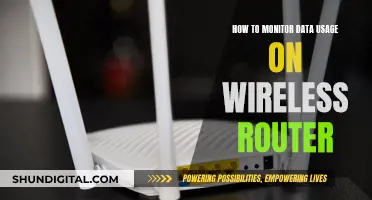
Plasma screens are a type of flat-panel display that uses small cells filled with electrically charged ionized gases to produce images. They are known for offering excellent picture quality and features like deep blacks and wide viewing angles. However, they have also faced issues such as screen reflection, burn-in, and phosphor trails. While plasma screens can be used as computer monitors, they are less commonly chosen for this purpose due to concerns about burn-in and higher power consumption. To identify if your monitor is a plasma screen, you can check if the screen is made of glass, as plasma screens are typically heavier and tend to radiate heat. Additionally, you can refer to the product manual or search for the model online.
What You'll Learn

Plasma screens are heavier than LCDs
Plasma screens were the first flat-screen TVs available to consumers in the late 20th century. However, LCD TVs quickly became thinner, lighter, and easier to package and transport. The heavier weight of plasma screens also made them more fragile and difficult to handle, requiring more careful transportation and set-up.
In addition to weight, plasma screens also tend to be larger in size. They were commonly used in large televisions with screen sizes of over 32 inches. On the other hand, LCDs are available in smaller sizes, including monitors and TVs smaller than 32 inches.
The weight and thickness of plasma screens are due to the technology used. Plasma screens contain tiny pockets of gas that turn into a plasma state when voltage is applied. This plasma emits ultraviolet rays, which then pass through phosphor cells to produce an image. Each pixel in a plasma TV consists of three phosphor cells (red, green, and blue) that combine to create the desired colour.
LCDs, on the other hand, use a backlight and an LCD panel to produce an image. Initially, LCDs used Cold-Cathode Fluorescent Lamps (CCFL) as backlights, but modern LCDs, also known as LEDs, use smaller LED lights for backlighting. This allows for more control over the backlighting and enables thinner designs.
Identifying LCD Monitors: A Quick Guide to Knowing Yours
You may want to see also

Plasma screens are made of glass
The glass panels in a plasma screen are coated with phosphors, which emit visible light when struck by ultraviolet light. Each pixel on the screen consists of three sub-pixels, one each for red, green, and blue. When an electrical current passes through the gas in the pixel, it becomes ionized and emits ultraviolet light, which then strikes the phosphors and causes them to emit visible light, creating the desired colours.
The use of glass in plasma screens has some advantages and disadvantages. Glass screens can provide a smooth and clear display surface, allowing for good picture quality. However, glass screens may also be more fragile and susceptible to breakage compared to plastic screens. Additionally, plasma screens made of glass can result in glare on the screen from nearby light sources.
Plasma screens, with their glass panels, offer excellent colour accuracy and can display deep blacks, resulting in high contrast and vibrant images. They also provide wide viewing angles, making them a popular choice for home theatre enthusiasts. However, due to competition from LCDs and other display technologies, plasma screens have lost market share and are now considered obsolete.
GamePlus on ASUS Monitors: What You Need to Know
You may want to see also

Plasma screens use more power than LCDs
Plasma screens use more power than LCD screens. LCD screens are more energy-efficient, with some "Eco" LCD panels using half the power of equivalent plasmas. This is because LCD screens use a backlight, while plasma screens are self-emissive, with each pixel producing its own light.
The higher power consumption of plasma screens is due to their use of a matrix of tiny gas plasma cells charged by precise electrical voltages to create an image. This process requires more energy than the LCD screens' use of liquid crystals trapped between two sheets of polarised glass, which are rotated by an electric current to create an image.
The difference in power consumption between the two types of screens has environmental implications. The lower power requirements of LCD screens make them a more environmentally friendly option than plasma screens. This factor, along with their thinner and lighter design, contributed to the shift in consumer preference towards LCD screens.
While plasma screens use more power, they do offer some advantages over LCD screens. Plasma screens typically provide better picture quality, with deeper blacks, superior contrast ratios, and more accurate colour reproduction. They also have wider viewing angles and handle motion better, making them a good choice for watching sports or movies with fast-moving scenes.
However, the advantages of LCD screens in terms of power consumption, along with their other benefits such as higher native resolution and lower cost, have made them the more popular choice in recent years.
Monitoring Employee Web Usage: Strategies for Effective Surveillance
You may want to see also

Plasma screens are bright
Plasma screens are renowned for their brightness, which is a key factor in delivering a superior viewing experience. This brightness is a result of the technology behind plasma screens, which involves tiny cells filled with electrically charged ionized gases that emit ultraviolet light when excited. Each pixel on a plasma screen consists of three sub-pixels, one each for red, green, and blue. When an electrical current passes through these gases, they emit ultraviolet light, which then strikes phosphors on the inside of the glass panel. This process results in the emission of visible light, creating the vibrant colours that plasma screens are known for.
The brightness of plasma screens is further enhanced by their ability to produce deep blacks. This is due to the structure of the screen, which consists of two glass panels separated by a narrow gap filled with gas. When the gas in the pixel is excited by an electrical current, it emits ultraviolet light, and the phosphors on the glass panel emit light. This localised illumination within each pixel allows for deep blacks and high contrast, resulting in a bright and vivid picture.
Plasma screens also offer excellent colour accuracy and a wide colour gamut. The combination of red, green, and blue sub-pixels within each pixel enables plasma screens to reproduce a vast array of colours. Additionally, plasma screens use the same phosphors as CRT displays, resulting in extremely accurate colour reproduction when viewing television or computer video images. This accuracy is particularly beneficial for tasks such as photo editing or graphic design, where colour precision is crucial.
The brightness of plasma screens is also influenced by their large size. Plasma screens were commonly used for large televisions, with screen sizes ranging from 32 inches to over 150 inches diagonally. This size advantage contributed to their popularity, especially for home theatre systems, as it provided an immersive viewing experience.
However, it is important to note that the brightness of plasma screens may degrade over time. Proper care and maintenance, such as avoiding static images for prolonged periods and following the manufacturer's recommendations, can help prolong the brightness and lifespan of a plasma screen. Additionally, advancements in technology have led to improved energy efficiency in newer plasma models, addressing some of the power consumption concerns associated with their brightness.
Monitoring Bandwidth Usage on Your iPad: A Step-by-Step Guide
You may want to see also

Plasma screens have a wide colour gamut
The human eye can see a wider range of colours than traditional display technologies can reproduce. This range of colours that can be detected by the average human is called the human visual gamut. Display technologies with a wider colour gamut can reproduce colours that are closer to what humans can see in the real world.
The colour gamut of a display is defined by the number of primary colours it uses. Three primary colours are necessary to approximate the human visual gamut, but more primary colours can increase the size of the gamut and allow for the reproduction of more saturated colours. Plasma screens typically use red, green, and blue lights for each pixel, but other display technologies may use additional colours to increase their colour gamut.
The size of a display's colour gamut also depends on the intensity range of the colours it can produce. A display with a wider intensity range will have a larger gamut. Plasma screens can produce a wide range of intensities because the brightness of each subpixel can be controlled independently.
In addition to having a wide colour gamut, plasma screens also offer excellent picture quality and were, for a time, a popular choice for consumers. However, plasma screens also suffer from issues such as screen reflection, screen burn-in, phosphor trails, and a short lifespan, which has led to their decline in popularity.
Hooking Up Monitors: The Right Card for the Job
You may want to see also
Frequently asked questions
If the screen is made of glass, it's likely a plasma screen. If it's plastic, it's probably an LCD. You can also check the weight, as plasma screens are significantly heavier than LCD screens. Additionally, plasma screens tend to have built-in fans to cool the display, so noise level can be another giveaway.
Plasma screens offer excellent color accuracy and can display deep blacks, resulting in high-contrast and vibrant images. They also provide wide viewing angles, so you can see the screen clearly from different positions in the room.
One of the main issues with plasma screens is screen burn-in, which occurs when a static image is displayed for a prolonged period. This can result in a permanent "ghostly" image on the screen. Plasma screens also tend to have higher power consumption and are more susceptible to reflection compared to other display technologies.







